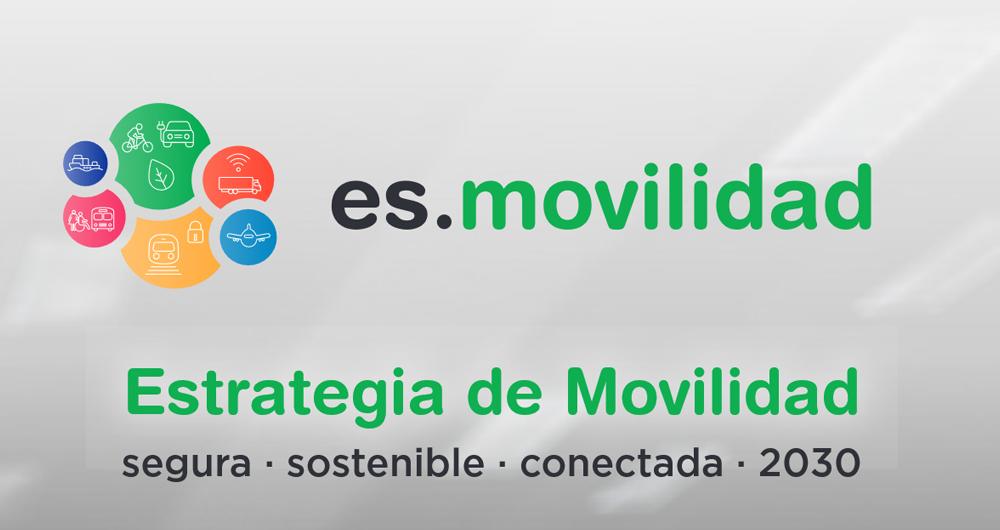
Open mobility data plays a key role in transforming current transport networks and systems, promoting their digitization and improving their sustainability and efficiency. The European Union is aware of this situation, and for this reason it has not only included mobility data among the categories considered of high value in the directive (EU) 2019/1024, but also highlighted its importance in the new "Sustainable and smart mobility strategy", including lines of action related to its impulse, how we approach previously.
In this new article we are going to focus on the situation in Spain, where measures related to open data have also been included in the national mobility strategy.
The Secure, Sustainable, Connected Mobility Strategy 2030
The Secure, Sustainable, Connected Mobility Strategy 2030 (es.movilidad) published by the Ministry of Transport, Mobility and Urban Agenda (MITMA) in September 2020 recognizes the importance of open data in the process of digitization and automation of transport, as well as the regulatory challenges posed by collection conditions, transfer and access to the data generated in the different parts of the value chain. For this reason, the strategy proposes that a future Law on Sustainable Mobility and Transport Financing addresses these issues, offering solutions that eliminate barriers to the opening of data andwhat guarantee the privacy of users and the protection of different business strategies.
Although they are present in other measures, in axis 5 (Intelligent Mobility) of the Strategy there are four measures, three of them within the line of action for the Facilitation of Mobility as a Service, Open Data and New Technologies for Analysis and Optimization of Mobility, in which open data explicitly plays a prominent role:
- To the extent designed to promote the publication of open mobility data from MITMA in coordination with the data.gob.es platform aims to adopt a proactive role in making open data available (both planned and in real operation) that are relevant to society.
- The implementation of the National Data Access Point for multimodal travel aims to create a single repository of open transport data (schedules, fares, routes, geographical coordinates of stops, etc.) provided by transport authorities, operators, providers of shared mobility services or transport services on demand, infrastructure managers, etc. anyway at the national level. In this sense, it should be noted that MITMA intends to go beyond the mandatory minimum and create three other national access points (real-time traffic, safety information in relation to traffic and safe parking for freight transport).
- To promote the development of mobility applications, guaranteeing the availability of quality and real-time data, MITMA will analyze the convenience of promoting complementary regulation so that all transport operators, infrastructure managers, and transport service providers on demand. provide dynamic, reliable and real-time data of their transport services to be made available to third parties.
- Finally the design and implementation of the SIMPLE technology platform, also foresees the reuse of information throughout the logistics and transport chain, based on the principle of providing unique data only once. This platform will allow to know the traceability of goods in the different means of transport and, on the other hand, will allow the interconnection between the Public Administration and the different agents of the private logistics sector to facilitate trade and transport, nationally and internationally.
These measures are summarized in the following image:

On the other hand, a request for expressions of interest to identify proposals for the integration of artificial intelligence in the value chains of the economy in order to promote the digital transformation of the economic fabric, within the framework of Recovery Plan. And one of the five axes on which one's own National Artificial Intelligence Strategy (ENIA) recognizes the impact of AI and data is of course, sustainable and smart mobility. It should be noted that it is an invitation aimed at projects in the phases closest to the market of the innovation process based on medium to high maturity technologies (TRL 6 onwards) as a complement to R&D support actions.
Now that the pandemic period is coming to an end, the economic recovery effort opens up fascinating opportunities for innovation and digital transformation in sectors where the penetration of artificial intelligence and the use of data so far has been much lower than the sector of the information technologies, something that not only happens in mobility and transport but also in the farming, energy or health and education.
We are therefore faced with a unique opportunity that we cannot afford to miss; which is also accompanied by a significant boost in the form of public financing and in which transport and mobility stand out due to their impact not only on the economy, but also on the environment and on the quality of life of citizens.
Content written by Jose Luis Marín, Senior Consultant in Data, Strategy, Innovation & Digitalization.
The contents and points of view reflected in this publication are the sole responsibility of its author.